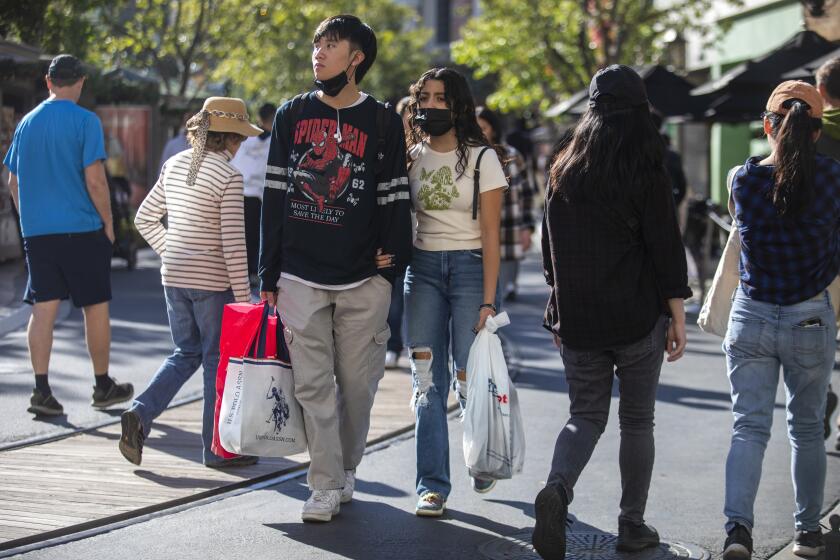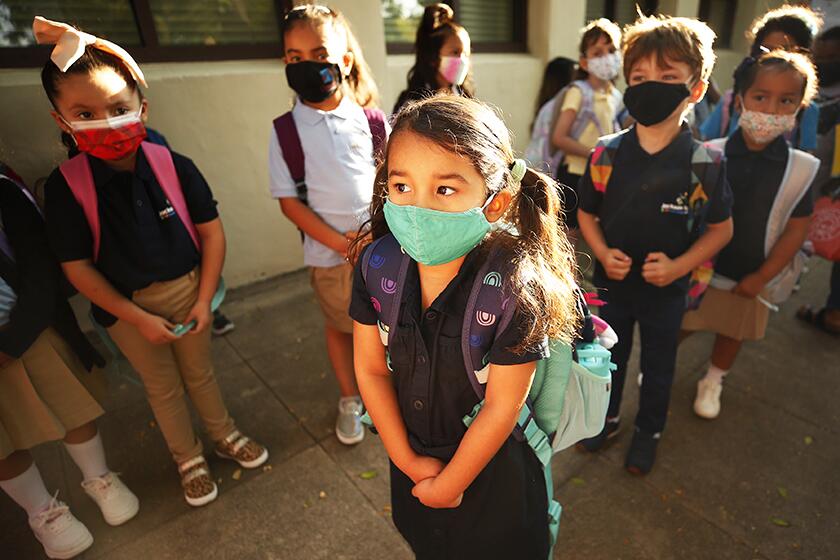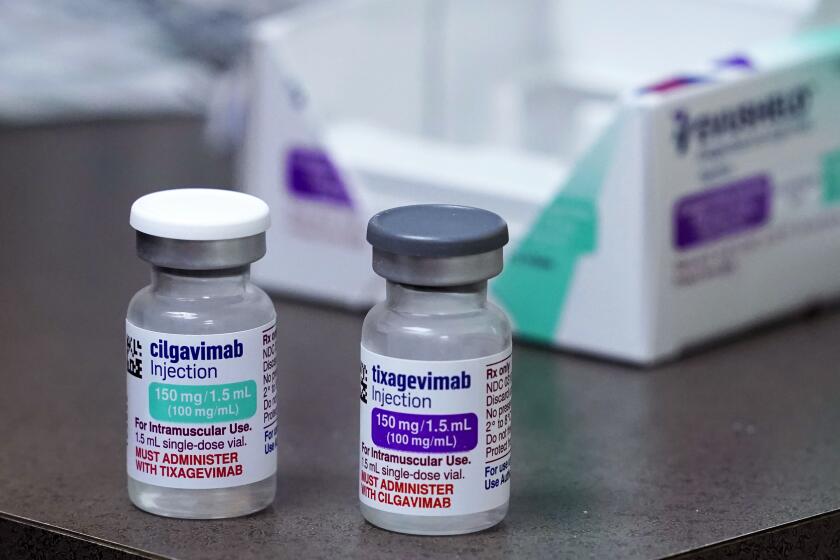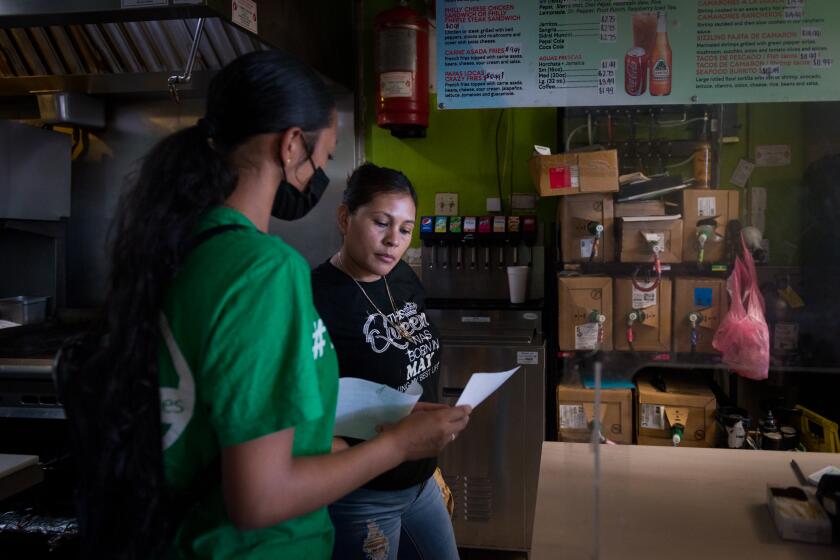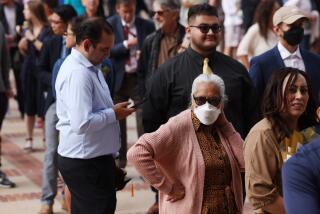Who are the L.A. County residents still most likely to die of COVID-19?
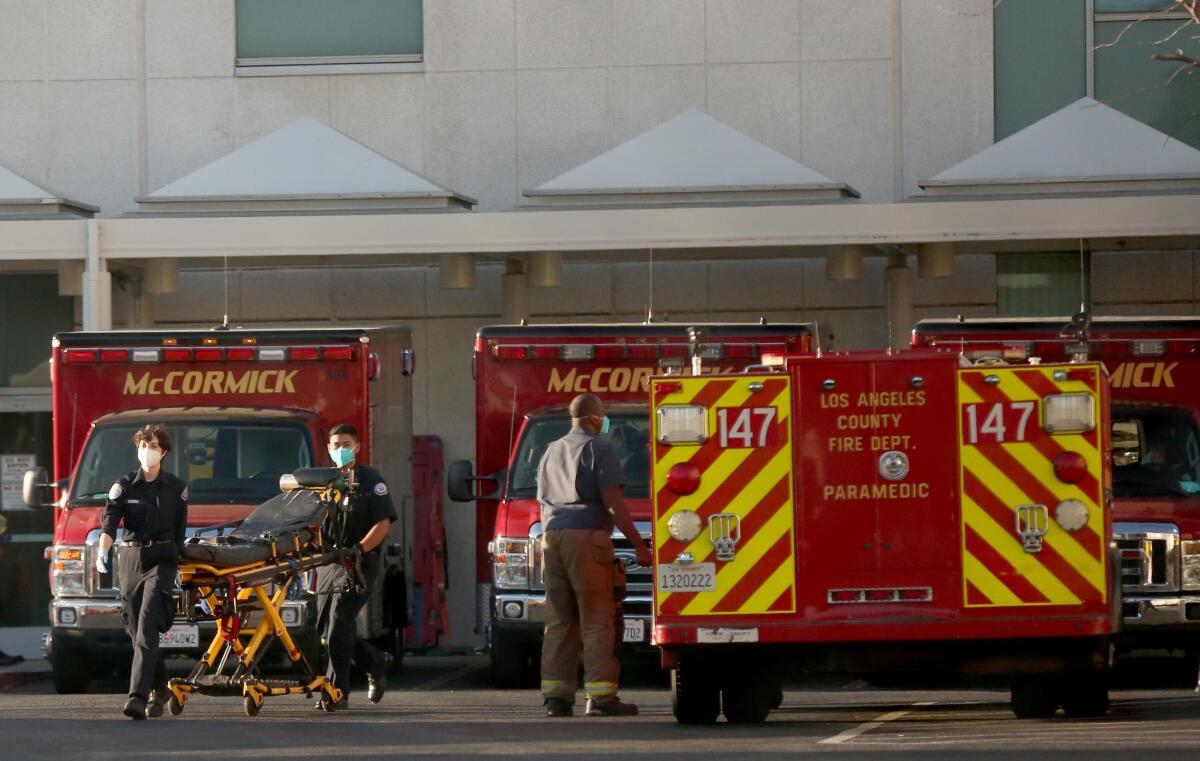
- Share via
Unvaccinated people were more than seven times as likely to die from COVID-19 in Los Angeles County as those who received an updated booster during the latest coronavirus spike, underscoring the potential benefit of an additional shot even as pandemic metrics improve.
Over the 30-day period ending Jan. 3, which covers the bulk of the post-Thanksgiving coronavirus surge, the death rate among unvaccinated Angelenos was 16.6 per 100,000 residents, according to an analysis by the county Department of Public Health. Among those who had received an updated bivalent booster, the comparable rate was significantly lower: 2.3 deaths per 100,000 residents.
For every 100,000 vaccinated people who haven’t yet gotten the updated booster, just under five died.
The data illustrate “the very real protection offered by the bivalent booster and by vaccines, even against the newer variants that are circulating now,” L.A. County Public Health Director Barbara Ferrer said.
“People often mistakenly think that they don’t need an updated protection because they’ve been previously infected with COVID. Or they don’t realize that they’re even eligible for the updated booster,” she said Thursday. “If you haven’t had a booster for COVID since August of 2022, or if it’s been more than three months since you had a COVID-19 infection, it is time for the updated booster.”
L.A. County’s hard-won progress was attributed both to community immunity and tools that have blunted some of the coronavirus’ worst effects.
The county’s analysis adds to findings recently released by the U.S. Centers for Disease Control and Prevention that the updated COVID-19 booster shot has helped prevent illness from the XBB-related subvariants — the latest members of the sprawling Omicron family.
According to the most recent state data, unvaccinated Californians were roughly three times more likely to die from COVID-19 than those who had received at least a primary series of shots in November.
XBB.1.5 is now estimated to be the nation’s dominant subvariant, likely accounting for more than 60% of coronavirus cases for the most recent week available. The California Department of Public Health most recently estimated its statewide proportion at 33.9%.
It’s likely many of those who died of COVID-19 during the December surge had battled the disease before, Ferrer said, given that most people have been infected with the coronavirus.
COVID-19 remains a global health emergency, but the pandemic may be nearing an inflection point amid higher levels of immunity, the WHO says.
Surviving a brush with COVID-19 imparts some degree of protection against future infection, though how enduring depends on a number of factors.
But some studies suggest having survived COVID-19 doesn’t necessarily protect against severe illness or death from a subsequent infection. A study published in the journal Nature in November suggested that a repeat coronavirus infection “contributed additional risks of death.”
“The evidence shows that reinfection further increases risks of death, hospitalization and [damage to] multiple organ systems,” the study said, such as to the lungs, heart, blood, gastrointestinal, kidney, musculoskeletal and neurological systems, and it increases risk of diabetes and mental health disorders.
About 73% of Los Angeles County residents have completed their primary vaccination series, and 81% of residents have received at least one dose of vaccine, data show. But only 22% of L.A. County residents 5 and older eligible for the updated booster have received it. Coverage is higher for seniors, with 39% of eligible individuals 65 and older having rolled up their sleeves.
While wearing a face covering is still required in certain select settings and still encouraged aboard public transit, the decision for most should now be considered a matter of personal preference.
COVID-19 deaths are still relatively high compared with last summer. L.A. County has averaged 140 deaths per week for nearly a month, higher than last summer’s peak of 122, but lower than the prior winter’s peak of 513. The all-time pandemic peak was 1,625 deaths during a one-week period in mid-January 2021, a time when hospital morgues were overflowing with corpses.
Ferrer said a more reassuring weekly death rate would be about 35. Such a number might still be difficult to accept — especially because many deaths are now largely preventable with vaccines — but would nonetheless represent stability and “indicate that our protections are really working extraordinarily well.”
L.A. County reached such levels twice in 2022. There were 24 COVID-19 deaths recorded during one week in May, and 43 the first week in November.
“It’s important that we continue to be aware that this virus is still dangerous and remains a leading cause of death in L.A. County,” she said.
Evusheld was designed to protect immunocompromised people from serious cases of COVID-19, but the latest Omicron variants have rendered the drug useless.
For those who do get sick, Ferrer said, it’s important that they get tested and seek treatment if eligible. U.S. households became eligible again this winter for four free at-home COVID tests, which can be ordered through covid.gov/tests or by calling (800) 232-0233. Also, the federal government has ordered health insurers to reimburse customers for the cost of eight at-home COVID tests per month — of up to $12 per test — per covered individual, as long as COVID-19 remains a public health emergency, which is expected to expire on May 11.
Treatment is also important for many infected with the coronavirus, Ferrer said. There are two oral drugs available: Paxlovid, for age 12 and up; and molnupiravir, which is available only for adults. The drugs need to be started within five days of the onset of symptoms.
A third drug, remdesivir, can be administered intravenously at a healthcare facility to anyone at least 28 days old. A course of this drug needs to begin within seven days of the start of symptoms.
There are more than 1,100 sites in L.A. County where people can obtain anti-COVID-19 drugs, and more than 130 are “test-to-treat” sites where you can be tested for the coronavirus, speak to a healthcare provider and, if eligible, get the prescription and drugs in the same visit. A list can be found at ph.lacounty.gov/covidmedicines.
Community health groups are training teens to serve as health educators at school, on social media and in communities where COVID-19 vaccine fears persist.
L.A. County residents also can seek telehealth services by calling the county Department of Public Health at (833) 540-0473 seven days a week from 8 a.m. to 8:30 p.m. The department offers help in multiple languages. Those who have tested positive for the coronavirus will be connected to a healthcare provider at no cost, without regard to insurance or immigration status, and if the provider prescribes treatment, the residents can receive medicine by overnight shipment for free.
Between April and December, more than 6,300 residents accessed the county’s telehealth services, and more than 5,300 got medicine to treat COVID-19, Ferrer said. Most who have used this service live in neighborhoods most vulnerable to COVID-19, due to factors such as poverty.
“If you test positive for COVID, or you have probable symptoms, it’s always good practice to check in with a provider to see if you’re eligible for treatment,” she said. “I believe that many more people are eligible for treatment than those who think they are.”
More to Read
Sign up for Essential California
The most important California stories and recommendations in your inbox every morning.
You may occasionally receive promotional content from the Los Angeles Times.


